 Life & Style
Life & Style

Vietnamese national costume áo dài still hasn't lost its appeal despite the strong influence of modern fashion styles, and this was evident at a recent áo dài fashion show.
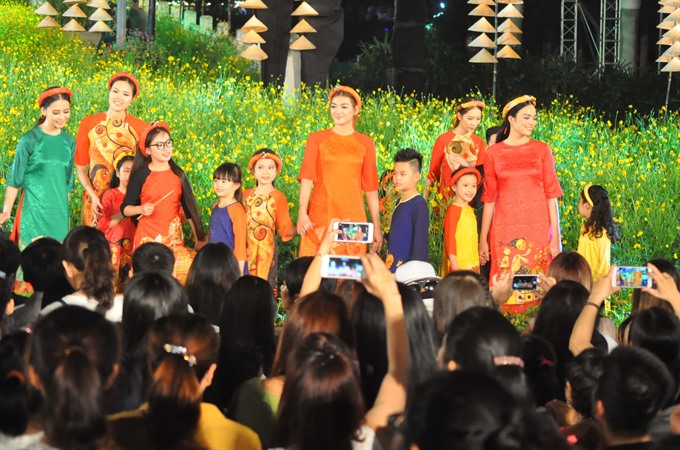 |
| Audiences excitedly captured the show. VNS Photo Phước Bửu |
by Phước Bửu
THỪA THIÊN- HUẾ — Vietnamese national costume áo dài still hasn’t lost its appeal despite the strong influence of modern fashion styles, and this was evident at a recent áo dài fashion show.
The show was held in Huế on Sunday evening as part of the Huế Craft Village Festival.
Thousands of people of different ages flocked to the city’s iconic bridge Trường Tiền Bridge, where the show’s stage and stands for the audience were erected, to enjoy the much-awaited costume performances.
Months ago, Huế residents heard of the áo dài collections that showcased copies of paintings by Huế artists, both alive and deceased. These late painters included the country’s prominent silk painter Tôn Thất Đào, well-known romantic style painter Đinh Cường and self-trained painter Bửu Chỉ.
This combination of áo dài and Huế’s beloved painters led to a new concept of performing arts, enthralling both fashion designers and local audiences.
"It was really challenging to work with painting themes on áo dài, particularly the silk paintings by late artist Đào," designer Hiền Đặng, who chose to work with paintings by famous late painter Tôn Thất Đào, said.
"His paintings were inspiring but they had an unusual structure, making it hard to copy on the áo dài flaps," she said.
Meanwhile, the audience was extremely excited to see the paintings being presented for the first time ever on the beloved costume. The wait, however, challenged people’s patience.
Their patience though paid off as young local girls dressed in purple áo dài and white conical hats walked out from the centre of the bridge, accompanied with light and music, which charmed the audience. Notably, purple is the typical colour of Huế.
Songs by late composer Trịnh Công Sơn, also a Huế native, and live performances on the violin, Vietnamese two-string fiddle and pear-shaped lute led to an upbeat ambience during the presentation of collections showcasing the paintings of Tôn Thất Đào and Đặng Mậu Tựu at the beginning and Đinh Cường, Bửu Chỉ at the end of the show.
Models wearing áo dài walked on the bridge and moved around the flower plants to come nearer to the audiences, making it seem as if the beautiful girls were walking in a peaceful, colourful garden.
"It was a good show. I felt that it was very good for an áo dài show. It was all very nice and the music was lovely," Nguyễn Văn Lợi, a local, said.
Before and during the show, traffic on the bridge and at the crossroads at its southern end was blocked, with the empty roads decorated with Vietnamese conical hats and fresh flower plants, transforming the entire area into an open grand stage.
However, the decorations had their drawbacks, as the plants were arranged in density and some reached till the models’ waists. "Part of the beauty of the áo dài is its flap, but the plants blocked the view," a designer, who took part in the show but did not want to be named, said.
Further, many collections were unable to show their printed painting copies because of the plants, including the collection by designer Chula, a Spanish man working in the field in Hà Nội.
The density of the plants and the steep road from the end of the bridge to the crossroads also led to chaos as those who had booked seats in the rear could not see the models from behind and attempted to move to the front for a better view. — VNS
Moments from the show captured through the lens of Việt Nam News’ photographers.
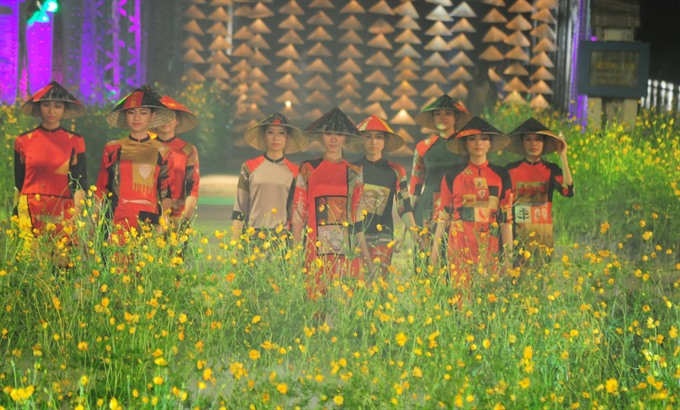 |
| A combination of áo dài and colourful conical hats. VNS Photo Phước Bửu |
 |
| Joy from wearing áo dài walking in a flower garden. VNS Photo Phước Bửu |
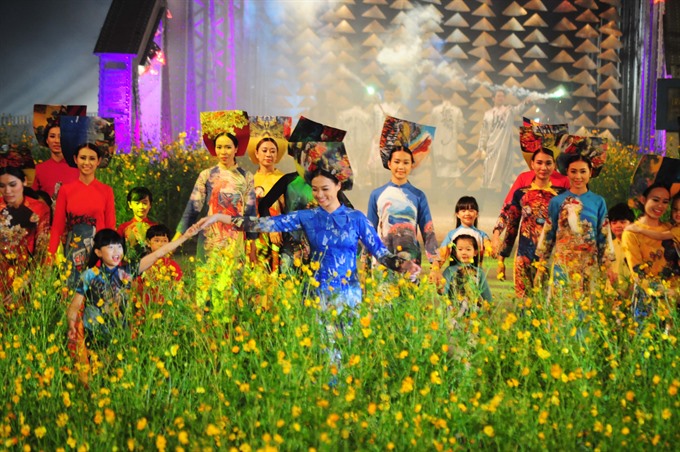 |
| Designer Quang Huy adopted vivid paintings by painter Đặng Mậu Tựu on his collection. VNS Photo Phước Bửu |
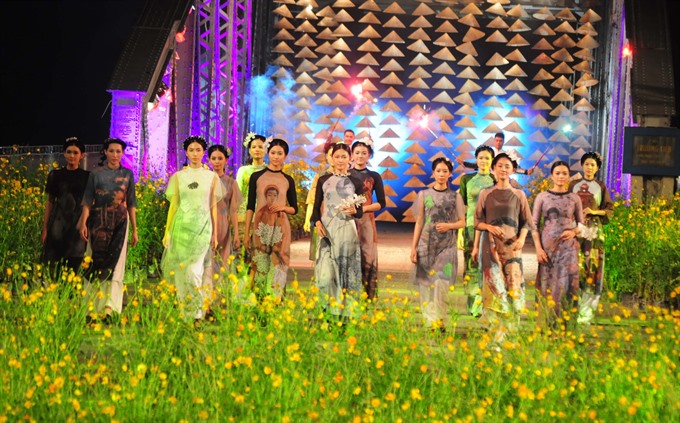 |
| Áo dài printed with copies of late Tôn Thất Đào’s silk paintings by designer Hiền Đặng. VNS Photo Phước Bửu |
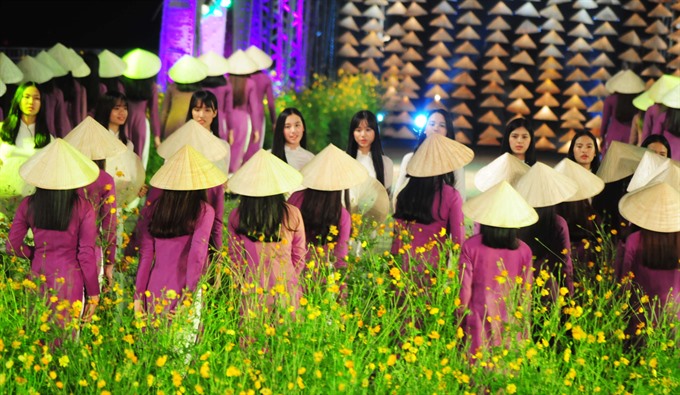 |
| Local girls dressed up in Huế’s purple áo dài opened the show. VNS Photo Phước Bửu |
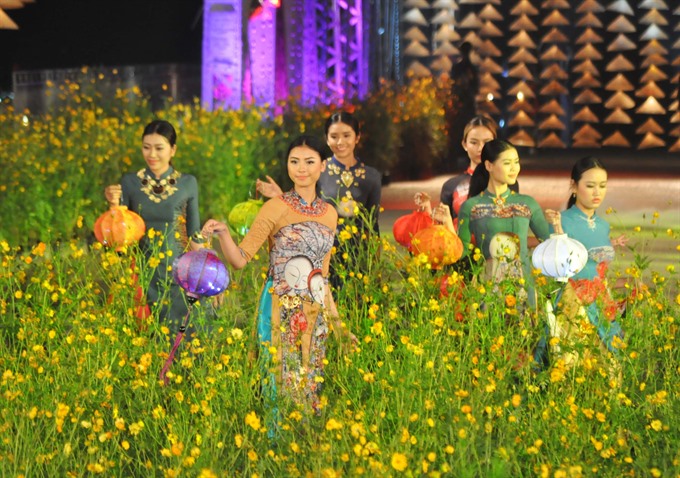 |
| A performance combined áo dài and lanterns in the Sunday evening show in Huế. VNS Photo Phước Bửu |




